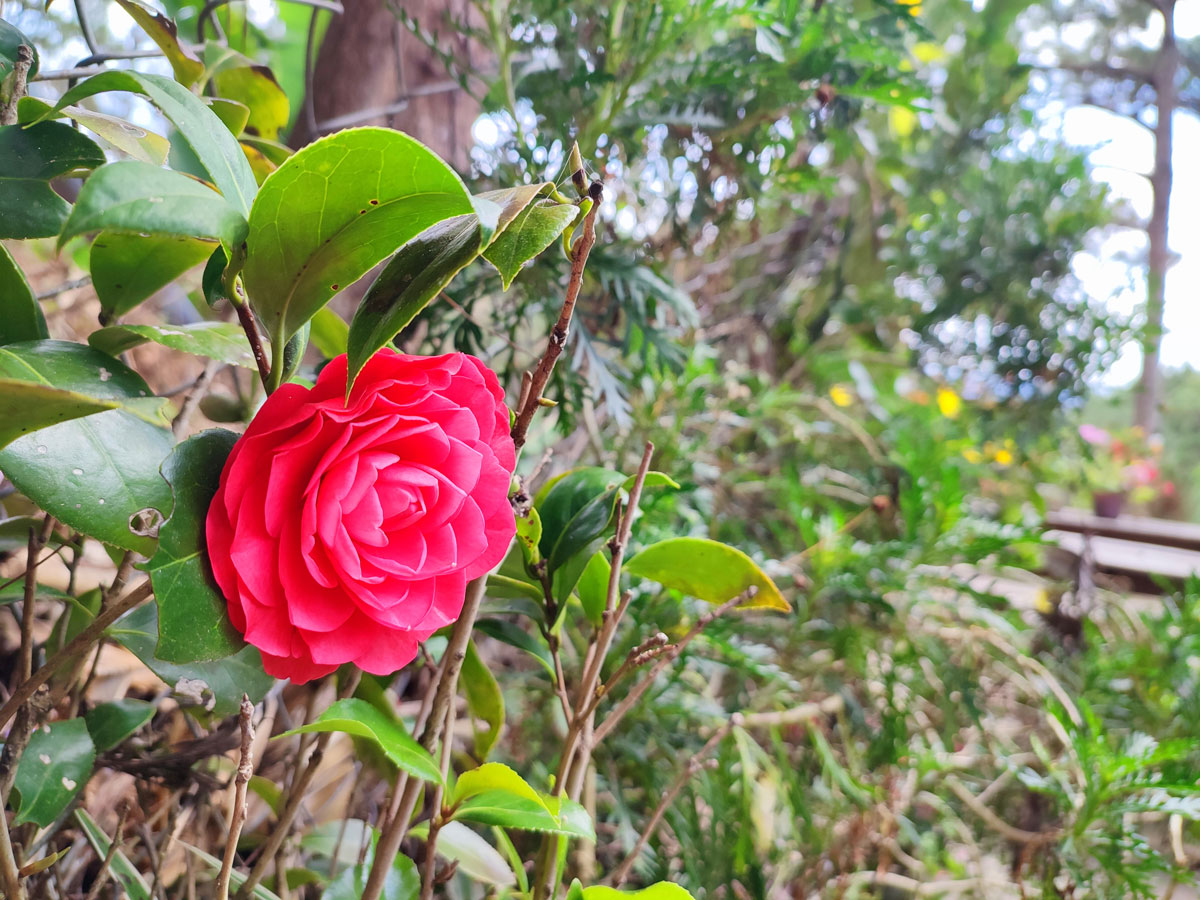“…that we should approach meditation in the way the Buddha intended it to be used, which was help us develop qualities of peacefulness and clarity, to learn how to understand our own lives and to learn how to live harmoniously with the world.”
“Meditation is to experience for oneself a blend of the qualities of peacefulness, wisdom and understanding; these are key elements”
Finding the Missing Peace – A Primer of Buddhist Meditation by Ajahn Amaro.
Let’s go diving into the Meditation realm in a very simple and modest manner of understanding based on my own reading, experiences and pondering along the way.
What is Meditation?
Meditation is to experience for oneself a balance of Qi – Khí (the breath/air flow in and out) and the present moment of being, to slowly come to a clarity of mind, a peace of soul, a wisdom of heart, which all leads to a deeper harmonization with the world and Nature.
Thiền chính là sự điều hòa của Khí (hơi thở vào ra) và trải nghiệm khoảnh khắc hiện tại, từ đó dần dần dẫn tới sự minh triết của tâm trí, sự bình yên tâm hồn, sự thông tuệ của trái tim. Tất cả đều đưa ta tới một thể cân bằng sâu sắc hơn với Thế giới và Tự nhiên.
The simple understanding above can inspire us to follow through these simple steps for a meditation session as below. All made for an ease like breeze. As above so below. It’s not like Maximus on the life lessons “I have had to learn the simplest things last”, here we’ll learn the simplest things first.
How to Meditate?
Step 1: Posture
Don’t force yourself to sit cross-legged on the floor as popular frames of a yogi master. Feel free to apply yourself with the most relaxed and natural posture in which you can sit or lie down still for at least half an hour.
The only rule: Keep your spine straight, which means you sit upright without leaning your back or lie loose face up without curving your body. The spine is the axis of your body, which can be visualized as a center funnel to channel energy from surroundings and throughout your body.
Now, begin the meditation by slowly close your eyes… (after taking away with you all of the words of course;)
Step 2: Warm-up Breath and Body-Diving
Start to inhale and exhale slowly for a few times. Let the air flow deeply into your belly through your nose then your lung. Then let it loosely out of your nose or your mouth. This is called Warm-up Breath.
Begin to bring your attention into the body and the spine. Take a moment to stay inside, say Hi and notice how your body is feeling in general: up or down? Hot or cold? Loose or Tense?… This is called Body-Diving.
Step 3: Deep Breath and Body Scan
Take your breath in and out a little more deeply and start sweeping the attention through the whole body from the head-top down to feet-toes, back and forth a few times until you get used to smoothly swimming up and down inside your body. Begin sensing carefully and blowing winds of relaxation to each part of your body; from the face and forehead, around the eyes, down to the mouth and jaw then to the neck and shoulders, elbows, arms, wrists, hands, fingers; from the throat area all along the spine down to the lungs, heart, stomach, then hip, thighs, legs, feet and toes.
This is called Body Scan on a maintaining theme of relaxing deep breath.
“Allowing yourself to breathe a little more easily. Follow this flow of relaxation in the chest down through the abdomen…the solar plexus. Notice if you hold a knot or a ball of tightness in the belly – in the solar plexus area. Anxiety can live there like a tangle of tension. Consciously let yourself relax that ball of tension…let the belly loosen and spread.” – Finding the Missing Peace by Ajahn Amaro.
Step 4: One Key Attention on Focused Breath
“The main point of meditation is training the attention to focus on the present moment. The past is a memory and the future in unknown, but here in the present is where life actually takes place.”
“There are many objects of focus one can use to bring that about, what are called in Buddhist jargon “meditation objects”. There are words or phrases one can repeat, such as a mantra.”
“Probably the most commonly used, accessible, and helpful focus of meditation practice is the simple rhythm of the breath.”– Finding the Missing Peace by Ajahn Amaro.
The breath is the key in meditation as I researched, experienced and pondered myself. That is why I included “the breath/Qi/air-flow” both in my definition and throughout all the steps of meditation from the Warm-up Breath to Deep Breath, and towards Focusing Breath.
In this step, you narrow down your attention to the core by fully focusing on the breath. Breath now is not only the warm-up and relaxing theme for you to dive in and scan your body, but also the “meditation object” to focus on naturally and attentively. It anchors yourself with the present moment here and now, in the favor of your own air-flow.
You’re maintaining your relaxing breath but start to focus more on its own rhythm and mildly adjust it more attuned to your body’s rhythm. A little slower? A little deeper? A bit more easily and smoothly?
You can start to count each walk of your breath from 1 to 100 for the first round. Each time you breathe in and out is counted as a walk of the breath… Let’s do it…1…2…3…till 100. It’s your call and your feeling to decide how many round of 100 walks will work for you.
Step 5: Let Go of the Breath and Expand the Attention
See? Still about the Breath but now, it’s time to let it go for the blossom period of your meditation session: Expanding your Attention.
Still keep in mind that, if spine is the axis of your body during a meditation session, then breath is the axis of your meditation session.
Time to let it go doesn’t mean you stop breathing properly, of course not. It’s just that as time flows by, step by step throughout your session, you’re naturally able to keep your mind stay in the present moment with all steady walks of your breath, after one or a several rounds of 100 as in Step 4.
Now all of these breath-walking just falls into the place, automatically and spontaneously, no need to hold on counting walk by walk. Let it go. Let it be. You start to expand your attention to everything inside and outside of you which comes and goes every moment of this present. You let your heart and your mind sense every arising sound, smell, wind, thought, feeling, emotion…at this moment. Purely observe them come, form and fade away, not in a reactive way. Let your mind be a loosen watcher of the passing-by train of things, thoughts and feelings while always ground itself on this moment land with all natural on-going walk of breath.
However, every time you see your mind caught up on the train of thoughts instead of standing still on the right side and observing, you always can bring your attention back to counting the walk of breath.
Bear in mind that the nature of our mind is wandering like a hyper-active child. Be kind and patient to this child, and start all over again with the breath-counting simple techniques.
You can also try to keep track on counting each walk of breath while begin to expand your insight attention to simple thing insides and around, like the sound of your heart beat, a breeze that brings a familiar flavor… You always can let go of your breath in a natural way that works best for you.
Finally, end the meditation by slowly opening your eyes and stretching your muscles.
A relief chest, soft belly and quality breath are basic feelings you should have after every meditation session.
Remember, feel your breath, keep it simple.
-MindHeart-















